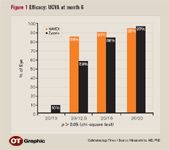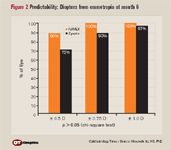Article
Q-factor optimization appears to enhance outcomes of wavefront-guided LASIK
Outcomes after wavefront-guided LASIK for myopia and myopic astigmatism using two Q-factor optimized excimer laser systems (NAVEX, Nidek; Zyoptix, Bausch & Lomb) were compared in a retrospective study.

Key Points

The comparative study included 40 eyes of 22 patients in each group that were followed for at least 6 months after treatment for myopia or myopic astigmatism between January and November 2004. Based on previous results achieved using each system for conventional LASIK, the NAVEX treatment was performed with a 4.5-mm optical zone and 8.0-mm ablation zone. The optical zone and ablation zone sizes for the Zyoptix treatment were 6.0 mm and 8.0 to 8.3 mm, respectively. The NAVEX treatment was performed using algorithm software (OPDCAT, Nidek) that applies the wavefront-guided ablation while aiming to maintain corneal asphericity.
Q-factor optimization

The two study groups in the retrospective trial were matched with respect to age (about 34 years) and preoperative values for best spectacle-corrected visual acuity (20/20), sphere (about –4.3 D), cylinder (about –0.8 D), and SE (about –4.7 D). The target refraction for all eyes was plano, and the same keratome system (MK-2000, Nidek) was used for all flaps.
At 6 months, uncorrected visual acuity (UCVA) was 20/10 or better in 10% of eyes treated with the Zyoptix system but in none of the NAVEX-treated eyes. Eighty-six percent of eyes in the NAVEX group achieved UCVA of 20/12.5 or better, however, compared with only 59% of Zyoptix-treated eyes. Nevertheless, no significant difference in UCVA was observed between groups at 6 months.

Newsletter
Don’t miss out—get Ophthalmology Times updates on the latest clinical advancements and expert interviews, straight to your inbox.




